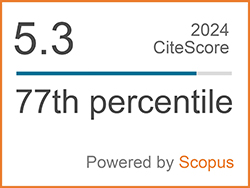Tropical Cyclone Hazardous Area Forecasting Based on Self-adaptive Statistical Methodology
Abstract
A tropical cyclone disaster is one of the most destructive natural hazards on earth and the main cause of death or injury to humans as well as damage or loss of valuable goods or properties, such as buildings, communication systems, agricultural land, economic losses, etc. To mitigate catastrophic phenomenon, a Modern Natural Disaster Management model or MNDM has been formulated and the most important phase in MNDM is the emphasis on the process before the catastrophic phenomenon or preparing tropical cyclone track forecasting, intensity forecasting, and risk area identification. Although Tropical Cyclone (TC) track and intensity forecasting has been steadily improving over the decades but some uncertainties still remain, a part of them is due to an inherent predictability bound that future improvement in the numerical model and most forecasting techniques will not be able to overcome. Moreover, risk area assessment and uncertainty of the major model, which is the most important phase in MNDM is excluded. To address these problems, this paper proposes an integrated short-range tropical cyclone hazardous area forecasting system that includes track, intensity and hazardous area forecasting in the system by using 13 features that are extracted from satellite images with the improvement of the traditional statistical methods. In addition, the model can display a graphic image of the geologically hazardous area by using three classes of intensity impact level i.e., using R34, R50 and R64, which are the radius of the maximum wind speed at each level for bounding area. The performance of the model was satisfactory, the average error from experiment results of R34, R50 and R64 forecasting with unknown tropical cyclone data between years 2013–2015 on Mercator projection map were lower than traditional techniques by 32.31%, 23.72% and 26.18% respectively.
Keywords
DOI: 10.14416/j.ijast.2018.10.005
Refbacks
- There are currently no refbacks.
 Applied Science and Engineering Progress
Applied Science and Engineering Progress







